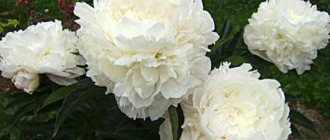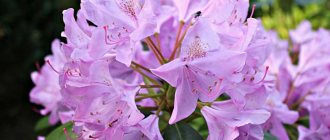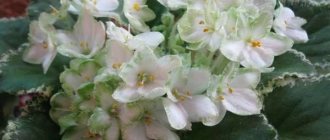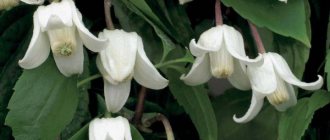The tree peony is a spectacular plant that can grow up to two meters and live at the planting site for up to a hundred years, and bloom for up to fifty. But he doesn’t favor the transplant. Therefore, you need to initially plant it correctly and properly care for it.
The list of procedures required for a tree peony includes watering and loosening the soil, feeding the plant, treating against infections, pruning and covering for the winter. And if you strictly follow all the recommendations, then achieving a decorative appearance and lush flowering from tree peonies is not at all difficult. However, you will have to be patient and take into account the fact that your outdoor pet will not grow as quickly as you would like, and it may not begin to bloom immediately.
This group of peonies is called tree-like because of its appearance: these plants are distinguished by thick, few-branched, erect perennial shoots.
Planting a tree peony
The tree peony feels best in an area with light partial shade, without drafts or scorching sun. The plant also has certain requirements for soil. There should be no stagnation of moisture in it, it should be rich in humus and have a neutral (perhaps slightly alkaline) reaction.
Most gardeners agree that the ideal time to plant peonies is from the second half of August to the end of September. However, there are those who allow planting in May-April. In this case, it is advisable to deepen the root a little.
Before the procedure, be sure to inspect the rhizome of the seedling. It should be healthy looking, without damage or rotten places. If there are any, carefully cut them down to healthy tissue, and treat the sections with charcoal or activated carbon.
If you get a seedling with a closed root system, pay attention to its above-ground part (it should be healthy), as well as the soil (should not have signs of waterlogging and mold).
A peony seedling with an open root system needs more careful preparation before planting. You must first straighten its roots and soak them for 20-30 minutes in Heteroauxin, Kornevin, KorneStim or any other root formation stimulator.
The planting pit for the tree peony is prepared several days before the event. It should be 60-70 cm deep and three times the width of the planting pot. About 20-30 cm from the depth of the hole should be allocated for drainage (expanded clay, gravel, broken brick, etc.). Since the tree peony tends to grow well in width, when planting several plants, the distance between them is left at least 1.5 m.
It is important to observe the planting parameters as accurately as possible. The root collar and renewal buds should be below the soil level. If the root system of the seedling is closed, planting is carried out together with a clod of earth. After placing the seedling in the hole, the voids between the rhizome and the edges are tightly filled with earth, then the plant is watered abundantly and mulched (using humus or compost).
Dilute heavy clay soil with sand and organic fertilizers, add 200-300 g of lime to acidic soil. Light sandy soil can be improved with humus, lowland peat and turf soil. Also add 30-40 g of superphosphate and 15-20 g of potassium sulfate to the soil.
- When and how to plant a tree peony
The second half of August and all of September is the most favorable time for planting a tree peony. We'll show you how to do it correctly.
Own-rooted or grafted peonies: which are better?
Tree peonies are shrubs reaching 1.5 m in height. During the period of active flowering, from 30 to 70 buds open on one bush, each with a diameter of up to 30 cm. The color and type of flower depend on the variety. The flowering period lasts from 6 to 10 days depending on climatic conditions and soil composition. The formation of buds occurs in the 3rd decade of May and the beginning of June. The shoots of the plant are rigid, do not require additional supports, and can withstand wind gusts of up to 15-17 m/s. When growing, for example, indoor hydrangea on the veranda, there is no need to talk about such properties.
Peony is valued for:
- longevity (without replanting, bushes can develop in one place for up to 50 years);
- abundant flowering during the growing season;
- ease of care;
- frost resistance;
- neutrality to neighboring plants.
Bush in full bloom
There are many classifications of tree-like shrubs. The most important thing for gardeners is typing by root characteristic:
- self-rooted - shrubs obtained through rooting cuttings or young shoots;
- grafted - seedlings that have adopted properties from the mother plant through grafting material.
Gardeners distinguish between self-rooted and grafted specimens by their roots. In the former, it has an elongated, thread-like shape and a light shade; in the latter, the rhizome is juicy, dark, and cylindrical.
The advantages of self-rooted seedlings are high life expectancy, abundant flowering, increased frost resistance, and resistance to many diseases. The plant develops slowly, the budding period begins only in the 4th year of growth. The advantages of grafted peonies include rapid growth and flowering (the first ovaries take 2-3 years). You can choose various varieties of clematis to accompany them.
When planting a seedling in open ground, gardeners first determine the type of rhizome, since grafted ones do not tolerate frequent transplants well and are more susceptible to diseases. They cannot be propagated by division, but young shoots that emerge from the main bush in the spring can be used as planting material.
Feeding tree peony
When applying fertilizers to the planting hole in the first two years, additional fertilizing is not required for the plants. Subsequently, tree peonies are fed four times a season.
When young red shoots emerge from the soil . For feeding use 1 tbsp. ammonium nitrate or urea dissolved in 10 liters of water, and pour this volume under each bush. After this, the soil is mulched with humus.
Immediately after the buds appear . For this, 1/2 tbsp. ammonium nitrate, 1/2 tbsp. superphosphate and 1/3 tbsp. Potassium salt is mixed, scattered under the bush and carefully embedded in the soil.
- How to feed peonies in spring for lush flowering
Thanks to these fertilizers, peonies will bloom profusely and for a long time.
During peony flowering, repeat the previous feeding or add 1-2 cups of wood ash under each bush.
Immediately after the bush has finished flowering . Add 1 tbsp under the bush. superphosphate and 1 tbsp. potassium salt.
Watering
Tree peonies should be watered deeply in the spring, before the plant blooms. After the inflorescences appear, it is better to water the shrubs in moderation, as the soil dries out. By August, when the plant has completely faded, watering should be stopped altogether so that the branches have time to ripen before winter frosts.
The shrub, in principle, like most ornamental plants, does not tolerate ice water coming directly from a well or central water supply. Therefore, many gardeners fill barrels in the morning, from which they water the peonies with warm water in the evening.
Treatment of tree peony from diseases and pests
Like other flower crops, tree peony is susceptible to some infections, most of which can be saved from with a timely and adequate response. Here are the main ones.
Gray rot . Brown spots with a wet gray coating appear around the stem near the root collar, as well as on the leaves. Young shoots wither, and over time the plant itself withers. To combat the disease, the drugs Chistotsvet, Skor, Diskor, Maxim and others are used. As a preventive measure, spraying with 1% Bordeaux mixture is carried out in the spring. For winter, the stems of the plant are cut short.
Rust . The leaves of a diseased plant become covered with spots-pads of brown, orange or reddish color. The disease spreads quickly by wind and spreads to other plants. If a disease is detected, infected parts of the plant must be immediately removed, and the bushes themselves must be treated with Fitosporin-M (according to the instructions for roses), Pure Flower Bau, Abiga-Peak.
Powdery mildew . A characteristic white or grayish coating appears on the leaves, resembling scattered flour. Affected leaves become deformed and dry out. You can fight the disease with the help of fungicides such as Fitosporin-M, Rakurs, Chistotsvet Bau, Chistotsvet, Alirin-B and others.
Verticillium wilt occurs when peonies begin to wither leaves and flowers during flowering. There is no cure for this disease: diseased plants will have to be destroyed. As a preventive measure, use the drug Healthy Soil, watering the soil with it during the growing season of plants (according to the instructions).
Ring spot (mosaic) and other types of spots. Yellow spots or stripes appear on peony leaves, usually in the form of rings or half rings. Over time, they may become brown in color. Plant growth stops, flowering ability is reduced. There are no drugs against this disease; infected plants will have to be uprooted and destroyed. As a preventive measure, experts recommend fighting pests that contribute to the occurrence of spotting.
Thrips and aphids are small insects that suck the sap from the plant. May be of different colors. Fitoverm, Iskra, Imidor, Tanrek, Tsvetolyuks Bau, Inta-Vir, Fufanon-Nova and other insecticides will help in the fight against them.
Ants contribute to the appearance of aphids on plants, but they are also dangerous for peonies in themselves, since they eat their petals and leaves. You can defeat ants using drugs such as Barguzin, Muraviin and Grom-2.
- Diseases and pests of peonies: photos, description and treatment
What diseases and pests are peonies most afraid of and how to protect these plants from major misfortunes?
Plant propagation
This type of peony reproduces in many ways. Let's look at a few of the most popular and easy ones.
Dividing the bush
Self-rooted peonies are propagated in this way. But it can be used starting from the age of 5-6 years. The best months for breeding are mid-August and September.
The separated seedling should have young roots up to approximately 20 cm and 2-3 renewal buds. If the plant is healthy, it will have large and juicy buds.
The cut areas are treated with tree ash.
Layerings
This is also a very simple method of propagation.
- First you need to take a developed shoot and make a small cut along it.
- Treat the wound area with root.
- Pin the shoot to the ground with something, for example, a bracket.
- Place a layer of soil on top.
- The layering site must be constantly kept moist. Water regularly so that it takes root.
Cuttings
Propagation by green cuttings is very effective, but the wait for flowering will be long.
Cuttings are prepared in the summer until August. They are cut early in the morning. You need to leave 2 buds on each part. An oblique cut is made under the bottom one, and the leaves underneath are torn off.
Seedlings need to be placed in root solution for a day.
It is necessary to plant in the shade in soil with the addition of peat and sand, while burying the lower bud into the ground. The soil needs to be moistened regularly and the cuttings need to be sprayed. It is advisable to keep the plant in a greenhouse.
They accustom the peony to fresh air gradually, removing the greenhouse from time to time. Planting in a permanent place is carried out next year in spring or autumn.
Tree peony pruning
The procedure begins from the second year of the plant’s life. Pruning the tree peony promotes the formation of the bush, and subsequently more luxuriant and long-lasting flowering. The event is carried out either in the spring (before the buds open) or in the fall (approximately after the first frost).
Spring pruning of tree peonies differs from autumn pruning. In the first case, only old and weak shoots are shortened so that they do not take away the strength of the plant that is about to bloom. In the second, the bush is slightly rejuvenated to stimulate the appearance of new shoots and flowering.
Peonies over 10 years old are often completely pruned to the stump. This is also done for the purpose of rejuvenation. It is even better to dig up the plants at the same time as this pruning and divide them so that each resulting part of the plant has 3-4 buds. Typically this procedure is carried out in August.
Immediately after wilting, even before the petals fall, faded buds should be removed so as not to provoke the development of diseases. The appearance of large upper flowers is stimulated by removing the side buds when they reach the size of a pea.
- 5 secrets of lush peony flowering from a specialist
A specialist agronomist and consultant for the popular magazine “Flower” shares tips on how to properly care for peonies.
Flower care
As you know, proper planting alone is not enough - a tree peony also needs proper care.
Sometimes gardeners wonder: why doesn’t the tree peony bloom? The reason may be improper watering.
In spring and before flowering, the plant requires abundant watering. At other times it is watered sparingly. Water must be prepared in advance. Usually it is stored in cans for natural heating. After flowering, watering should be reduced and by the end of summer stopped altogether.
The plant needs feeding for good flowering. Use fertilizer every 12 days. You need to start fertilizing the soil in April, and the last application is 14 days after the plant has flowered. Bone meal, wood ash, and mineral fertilizers may be suitable for feeding.
But remember that an excess of nitrogen in the fertilizer reduces the peony’s immunity to various diseases.
Care after flowering and preparation for winter
The tree peony finishes flowering at the end of June. Faded shoots must be cut to the base of the upper axil, as they will dry out anyway.
Caring for tree peonies after flowering
Winter shelter for tree peony
This crop is not afraid of frost, but shelter for the winter is necessary. In the spring, during the first thaw, root buds may wake up, and further return frosts are destructive for them. To protect it in late autumn, the soil around the plant is mulched with peat, and the tree itself is wrapped in spruce branches.
Tree peony is a long-liver among its relatives. It practically does not get sick and is not affected by pests. Plants are difficult to tolerate transplantation, and propagation of the crop is more difficult than that of deciduous varieties, but if desired, you can use grafting and layering to organize a peony garden on your site.
Which seedling is better to choose?
It is best if the tree peony seedling has 2-3 woody shoots with unblown, rather large dark red glossy buds (resting state) 18-25 cm in height.
Most of them are brought from nurseries in China, Japan and Poland. Many experts believe that foreign planting material is less prepared for our climate and recommend buying seedlings of Russian varieties.
Russian tree peonies have high winter hardiness and develop well in the Moscow region, North-West, Urals and Siberia.
However, residents of Moscow and the Moscow region have a better chance of buying them, since many of them are grown in the Botanical Garden at Moscow University. Much credit for this belongs to Marianna Sergeevna Uspenskaya.
ADVIСE
Important! Damage to the buds during transportation or planting leads to a delay in flowering by 1-2 years.
Interesting fact for residents and guests of Moscow
In the capital of Russia, the oldest botanical garden, founded in 1706 by Peter I, is known as the “Apothecary Garden”. So, tree peonies were planted there back in the 19th century, and they still bloom there. Now they are approximately 140-160 cm in height.
The botanical garden (metro station Prospekt Mira) has many greenhouses with exotic and rare plants that are open to the public. There is also a website and an Instagram profile where you can find out the time and cost of excursions. There is also a plant shop there from mid-April until the end of autumn.
ADDITIONS TO THE ARTICLE:
Afterword
In this manual on planting and caring for tree peonies, many recommendations are consistent with the article from the supplement “Homestead Farming” from the magazine “Rural Nov”. The author of the article is M. S. Uspenskaya, the issue was signed for publication on October 23, 1991. And also the book “Peonies” from Marianna Sergeevna.
Marianna Sergeevna Uspenskaya is familiar to every person who is interested in peonies. This is a real guru and a legend, candidate of biological sciences (1982), senior researcher (1967) of the Botanical Garden at Moscow State University and author of many varieties.
By the way, on the Internet, 95% of the information about the agricultural technology of tree peonies is a processing of the works of Marianna Sergeevna. However, most of them resemble the game “broken phone” and contain contradictory information. Our editorial office stores the original of this issue of the magazine and the book, i.e. we studied the original source.
Finally, a video with the participation of the legendary Marianna Sergeevna and her advice live.
We wish your flowers to be healthy and bloom profusely every year!
Source











